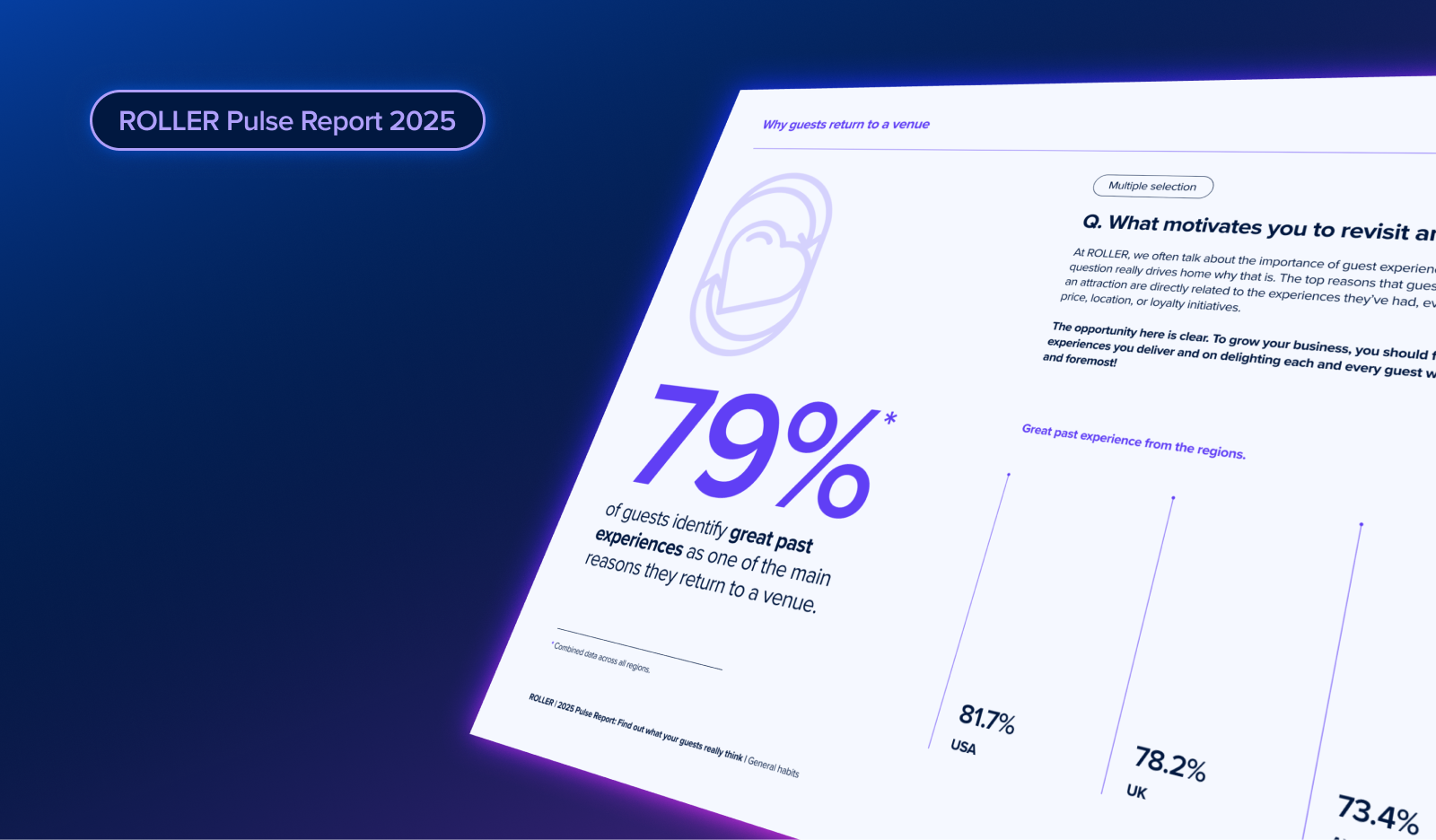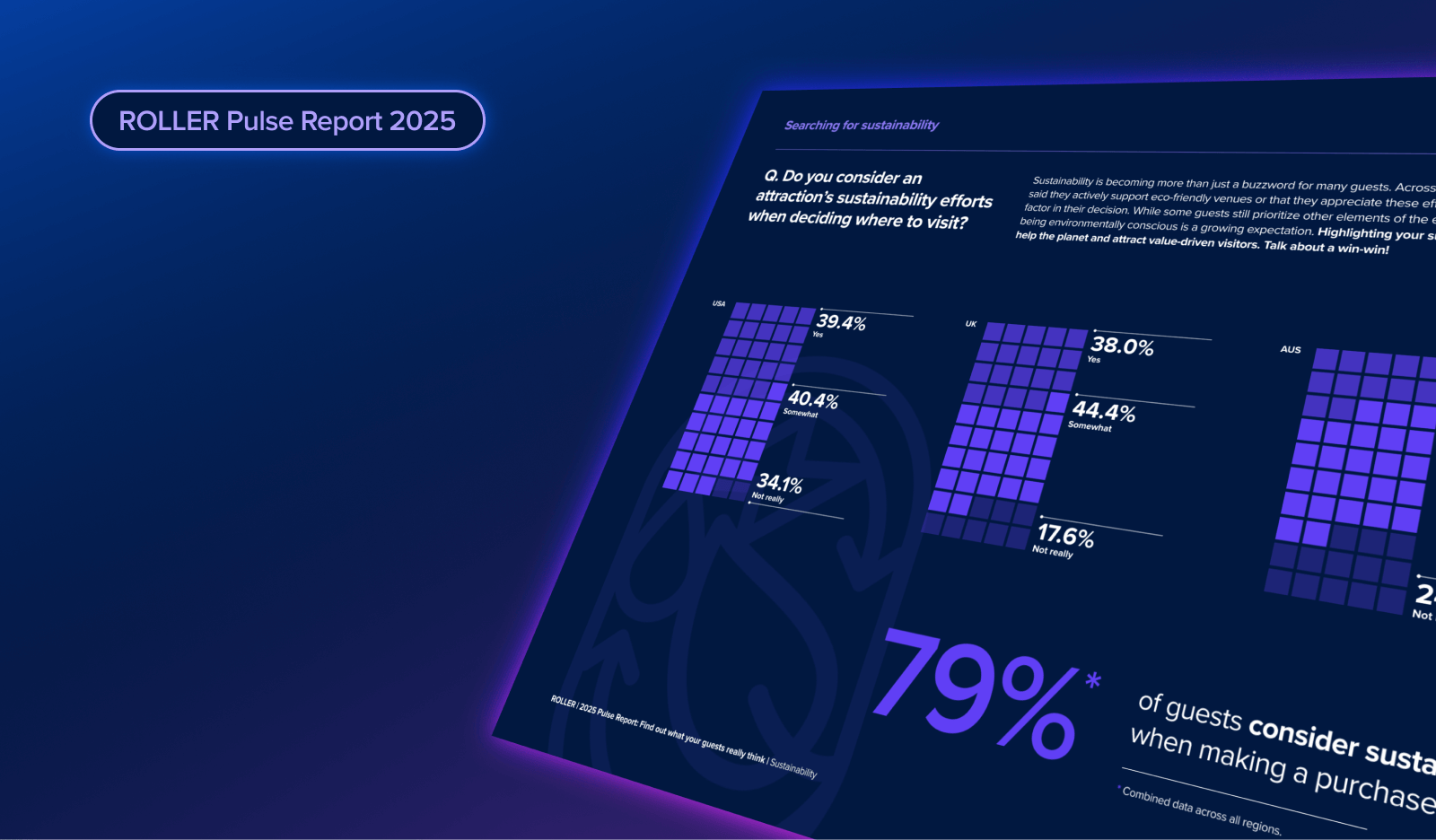How To Create a Feedback Culture At Your Venue

Welcome to the first episode of our Guest Experience webinar series!
Throughout this series, we’re going to cover four key topics:
- How to create a culture of feedback in your business
- How to collect meaningful guest feedback
- How to manage negative guest feedback, and
- How to use guest feedback to grow your business
To kick off the series, in this webinar, we’ll discuss the following:
- Why it’s important to create a feedback culture
- How to create an environment where feedback is safely shared
- What expectations to set around routine feedback collection, and
- How to use guest feedback to resolve complaints and grow
Why is it important to create a feedback culture?
1. Feedback shows you where your blind spots are
One of the most important things to consider is that perception is reality. Our eyes adjust to what we’re looking at, and your guests see their experience differently than you do.
At ROLLER, we’ve heard several times from managers that they don’t need to hear feedback from their guests because they are on-site and can see the operation themselves.
However, even if you know everything that’s happening at your venue, getting feedback from your guests’ perspective shows the experience from the lens of those who matter most.
From this feedback, you will learn things you may not have otherwise seen/ known, and in some cases, you’ll hear feedback you might disagree with. Either way, all guest feedback is valuable as it will help you grow.
2. Feedback strengthens your relationships with your guests
When you hear praise, it allows you to build loyalty through your advocates, who provide positive feedback/ reviews. And this is where the experience can get very personal, particularly because direct service encounters with your staff often lead to the highest levels of guest satisfaction.
And when you let your guests know how you’ll recognize the staff members involved, it will feel even more worthwhile for them to leave feedback.
On the flip side, responding to negative feedback is critical to strengthening — and in many cases, repairing — the relationships with your guests. Negative feedback allows you to learn about guest complaints you may not have known otherwise, giving you the chance to recover the guest relationship.
Studies have shown that less than 4% of people with a complaint speak up — which means that when you show your appreciation for guests, even when they complain, it is extremely valuable to the resolution process.
3. Guest expectations are rising
Guests’ expectations have gone up substantially in recent times.
While you may not consider your business competing with companies like Netflix, Uber, or Amazon, they have reset the expectations for their customers — many of whom are your guests.
Because of how the world is changing around us, the changes in our everyday habits transcend into how people expect the experience to be at your attraction.
So, if you don’t know what your guests are saying about you and what they want from you, you can’t get better.
4. Feedback is essential to growth and innovation
At ROLLER, we call this the Guest Experience Flywheel, and it can be used as a framework for growing your business through the guest experience. When each of these five sections works together, the flywheel spins faster, leading to further organic growth.

First, it’s up to your marketing team to attract guests; then, you must ensure your website is engaging enough to make the guest want to follow through with their purchase.
The ‘deliver’ stage covers your guest's experience in your venue, and ‘return’ signifies whether the delivery was successful enough to make guests want to return.
Finally, ‘advocate’ completes the flywheel when your guests love your experience so much that they become advocates for your venue and tell others to come and visit too.
Find friction in the GX flywheel
Friction is what slows the flywheel down and where you begin to lose momentum in your business. For instance, a guest experiencing an unresolved service failure will result in that guest not being a return visitor, and they will not be an advocate. And further, when that guest shares negative word of mouth, this will slow the flywheel down even faster, meaning that you’ve lost this particular guest and some potential guests too.
So it’s essential to know how your guests feel about your experience and that any problems in the guest experience are addressed promptly.
How to create an environment where feedback is safely shared
1. Balance the use of private and public review channels
An ideal feedback strategy should balance private (i.e., internal surveys) and public channels (i.e., Google, Facebook, etc.).
Many venues will push all guests toward online review sites as their primary source of feedback, and while this avenue may reap some feedback, it also publicizes negative experiences. Instead, it is better to focus on segmenting your guests into detractors and promoters.
Your first line of feedback collection should be through private channels, such as the Guest Experience Score (GX Score), to determine how satisfied your guests are.
A tool like the GX Score will prompt your satisfied guests to post their reviews to online review channels, and also switch to recovery mode for detractors and help you resolve service failures quickly and efficiently.
2. Encourage your staff to embrace feedback
Most organizations want to avoid complaints, and this is a dangerous mindset.
Instead, recognize that complaints help you grow! Complaints point out areas of your operations that need improvement. For this reason, seek out complaints at every opportunity, even the small ones, because even these complaints can impact the overall guest experience.
Expectations for staff
Staff should know that every guest will be prompted for feedback and that they have the opportunity to truly make a mark on the guest’s experience that can be traced back to them.
Additionally, staff should be made aware that guest feedback is the driving source of change and improvement within the business. So, it is a good thing when guests leave feedback, and they should encourage willing guests to do so.
Follow best practices around guest feedback collection
1. Swiftly respond to reviews
Guests need to know that their feedback is valued and that they are not speaking into the void. By responding to their concerns/ reviews swiftly, the guest sees that you appreciate their review.
2. Tell guests how their feedback will be used
Before being asked to submit feedback, guests should be given a broad idea of what will be done with the feedback. For example, that it will be documented and given to the head/s of the department/s impacted for urgent review and action.
3. Create surveys with the guest in mind
When you ask guests for feedback, they should know that you value their time and that the survey will be quick and straightforward — not a 50-question survey with open-ended questions.
Long, open-ended surveys are overwhelming for most guests and lead to survey fatigue, which significantly drops your response rate. A good feedback experience will make them more likely to give you future feedback as well.
How to use guest feedback to resolve complaints and grow
1. Collect high volumes of feedback
Collecting high volumes of feedback gives you the power of quantifiable aggregated demand (i.e., you get a clear picture of all your guests' experiences with you). And this levels out your feedback across a broader range of your guests rather than potentially seeing minor issues from a smaller number of guests.
When looking at the data, your most significant friction points should rise to the surface as they gain the highest frequency of complaints.
On the other hand, one complaint is precisely that — one complaint, and doesn’t necessarily require a major overhaul based on the one guest. However, if this kind of complaint starts to become a trend, that is when you should take action toward a long-term correction.
2. Solve for the perception of the complaint, not the complaint itself
After you have collected your feedback, start finding solutions for your most significant friction points. A key thing to remember here is that when solving these friction points, the solution is not always the opposite of the problem.
The key to making changes is to solve for the perception of the complaint instead of the complaint itself. Doing this is often much more productive. For example, let’s say you receive many complaints indicating that wait times are too long.
The opposite of the problem is to reduce queues, but maybe you are already at max capacity, or these complaints arise during peak times of the year.
Whether a wait time is long or short is a subjective perception. A half-hour wait for one guest may feel long, while it may feel reasonable for another. Solving the perception might include things to make guests feel like the time passed quicker or that the time was spent valuably.
Solutions could include introducing distractions in a queue, such as a backstory, games, or even mirrors. Also, by providing an accurate estimated wait time and even overestimating slightly, the guest will anchor their perception with the wait time you display.
And if the wait time turns out to be shorter, their satisfaction levels will be higher than if you had shown a to-the-minute accurate wait time. It’s all about perception, and in the above example, both scenarios had the guest waiting for the same amount of time — the only difference was the guests’ perception of the wait time.
These operational solutions impact your guests’ perceptions, and you’ll find that these types of solutions are quicker to implement, highly efficient, and much more cost-effective.
If you want to learn more, check out our guest sentiment analysis tool, the Guest Experience Score, and you can also watch the second webinar in the GXS series here.
Related articles

.png)
What the 2025 Pulse Report Reveals About Guest Booking Behavior at Attractions

2025 Pulse Report: How Sustainability Is Shaping Guest Expectations
Enhance your guest experience
Get free education, tips and inspiration to help you run a successful venue.
